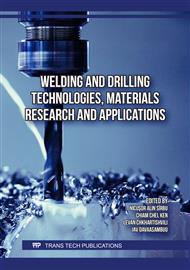p.3
p.17
p.23
p.31
p.41
p.49
p.59
p.73
Failure Analysis in Resistance Welded Automotive Components
Abstract:
This case study focuses on the laboratory examination and material analysis of welded components in automotive production. The investigation included metallographic analyses, microstructural evaluations, and non-destructive testing methods to assess weld integrity. Key issues identified were the presence of thermal distortions, incomplete welds, and material defects such as micro-cracks and porosity. A detailed metallographic study revealed that improper cooling rates significantly affected the heat-affected zone (HAZ) and weld microstructure, leading to weaknesses in material strength and increased susceptibility to fatigue. Variations in cooling water flow during the welding process were examined, showing that an intermediate cooling flow rate produced the most consistent microstructural properties. The analysis also indicated the presence of stress concentrators at weld interfaces, which may lead to premature failure under operational stresses. Recommendations include optimizing cooling rates and post-weld heat treatment to enhance material resilience, ensuring long-term durability and performance of welded assemblies.
Info:
Periodical:
Pages:
3-16
Citation:
Online since:
November 2025
Price:
Сopyright:
© 2025 Trans Tech Publications Ltd. All Rights Reserved
Share:
Citation:


